
Fitness trackers are becoming more and more popular lately. With the capabilities to keep track of your fitness activities, it unlocks the potential to unwrap your physical activities and probably even change to improve your lifestyle. Mostly fitness trackers focus on your health, it has monitors and sensors such as heart rate sensor, steps counter, activity sensors and even notifications to motivate you by monitoring your activities hourly. Secondary feature is mostly how notifications are delivered and the user interface.
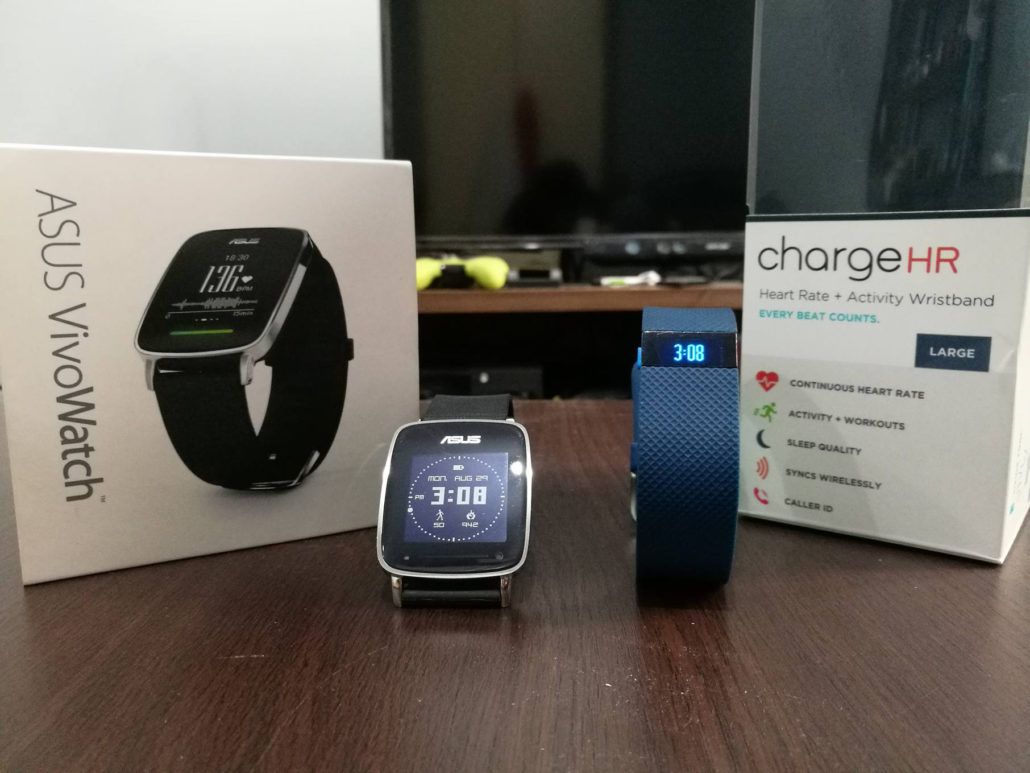
We got a chance to try out two fitness trackers that are really dedicated to fitness, sorry but the other smartwatches are just too much and tries to be everything. The ASUS VivoWatch and the Fitbit Charge HR, two of the available fitness trackers in the Philippines. With our fitness activities lately, it was the perfect opportunity to try out these fitness trackers.
To let you more relate to our comparison, we will compare the two devices based on experience and less on the technical terms.
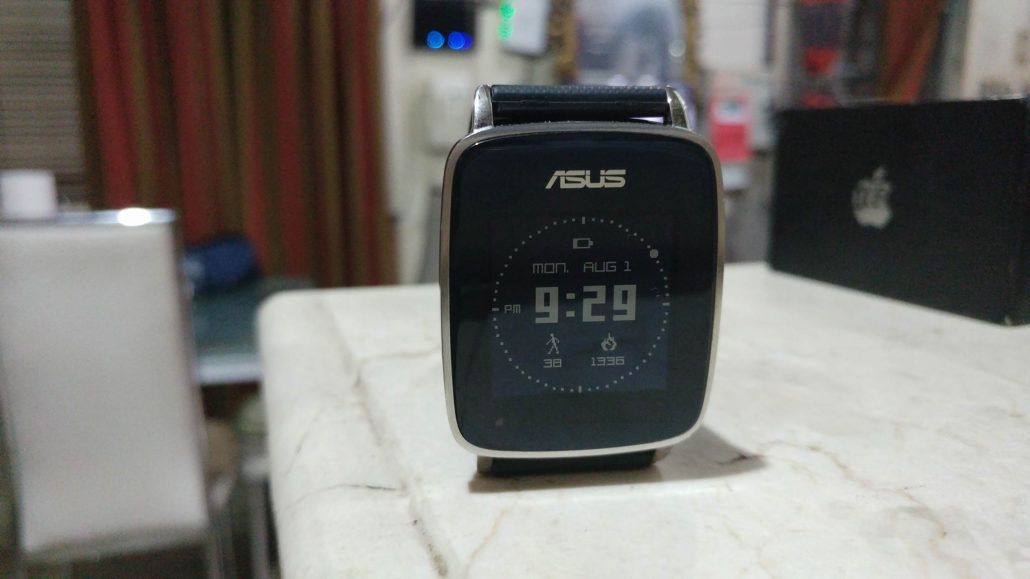
By the name of ASUS Vivowatch it states its purpose by its name…a watch. Interestingly the VivoWatch is a 1.63″ watch that has a 128×128 black and white display for low power consumption. The face plate has a black border protected by Corning Gorilla Glass 3 with a steel chrome finish frame, paired with the black textured rubber strap the design isn’t too much of a shout out and easily pairs with your outfit.
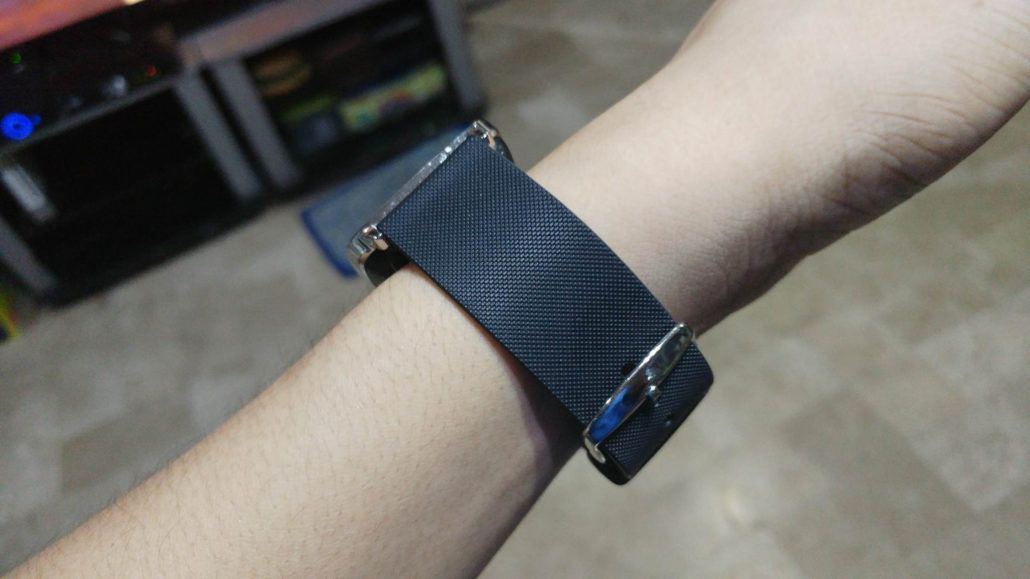
Fitting the Vivowatch is really easy, the adjustment holes for the fit are wide enough even for the biggest wrists. With two free loop / ring to securely adjust the watch, on the inside are groove to give better grip while providing better ventilation to avoid perspiration.
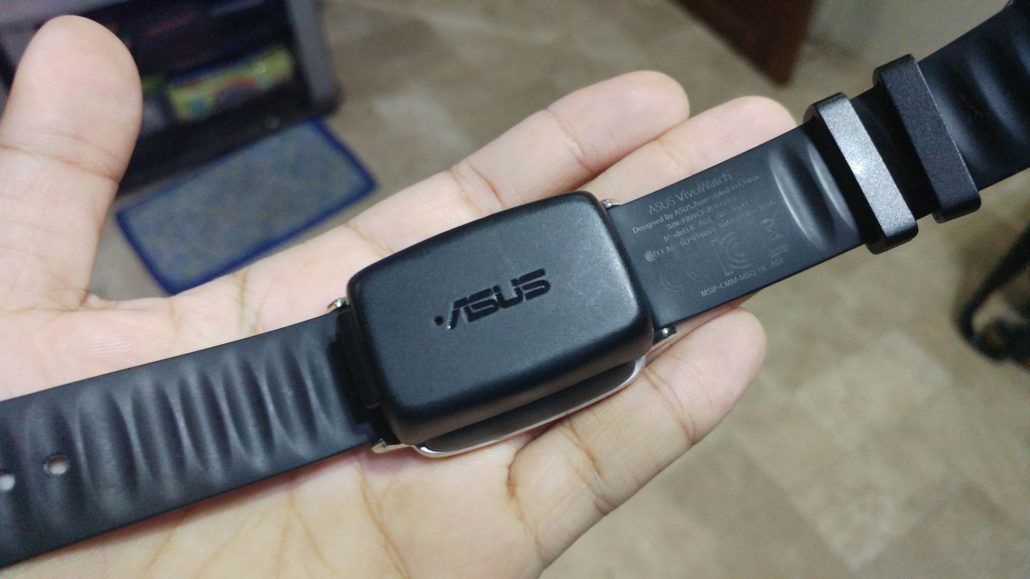
The Fitbit Charge HR on the other hand is simply a strap, measuring more than an inch wide the strap isn’t really that small to be that discreet. The display is a simple black translucent plastic that is no more than an inch wide, color of the LED display will depend on the color of the device.
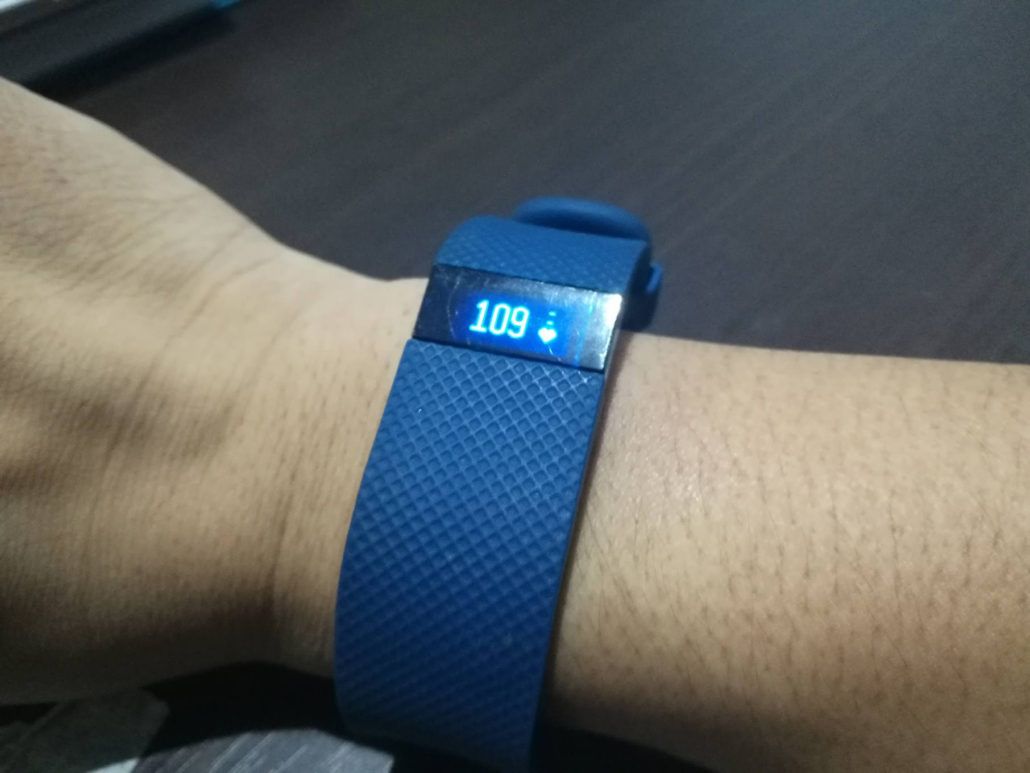
Strap of the Charge HR has cross diamond patterns on the outside, while on the inside is a soft matte finish for a comfortable grip. The strap has a horizontal steel lock paired with a free loop that locks to one of the grooves for a secure fit. While all these are good, we noticed that the heart rate sensor bumps a little bit more giving the sensor a more snuggle fit when worn but you’ll definitely notice this in the 1st few tries.
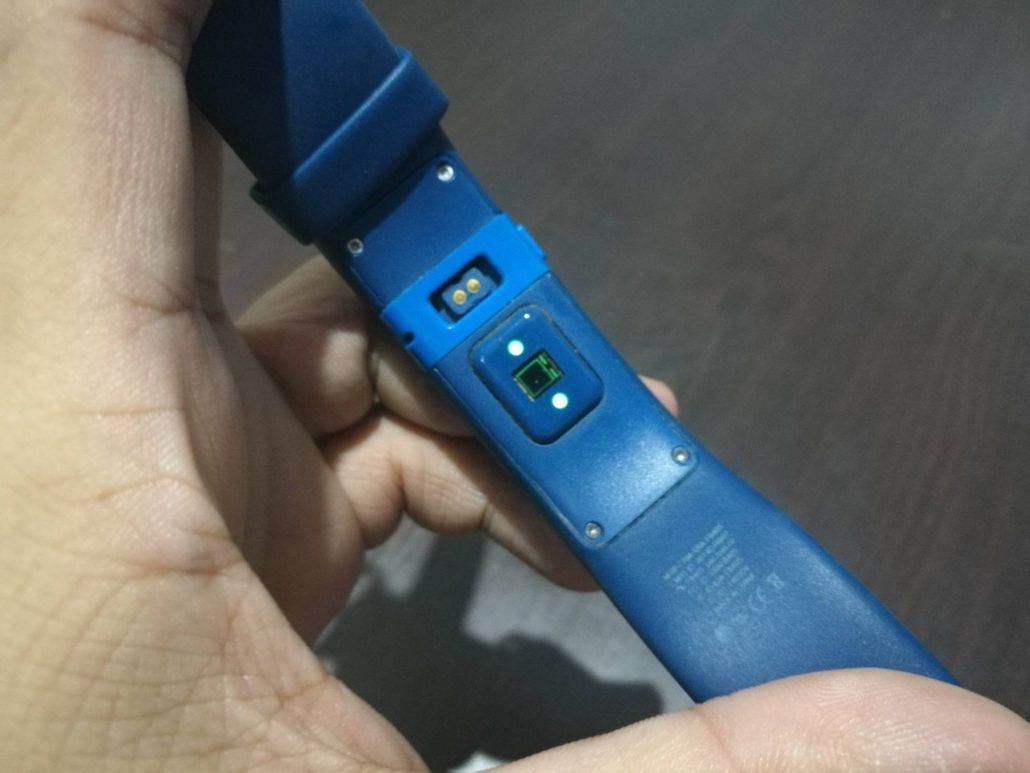
While the Vivowatch has a bigger footprint, the quality rubber and flat back sensors gives the vivowatch a more comfortable fit. Not to mention that the metal watch frame is something you’ll definitely appreciate. Though if you want a more minimalist design the charge HR is a better option, the problem you’ll only wonder is if it’s okay to wear a strap every day as compared to a watch.
Vivowatch has one physical button to activate the device, you can swipe to show displays such as heart rate, alarm, UV Index (Vivowatch exclusive), Activities such as steps and calories burned and lastly are notifications from apps to show around 50 characters of text depending on the notification. What’s good with the Vivowatch is the bigger screen display, it delivers more interactive and better UI when showing anything in the display. You can even customize the watch face from analog, digital or even combination.
While on the Charge HR, the small LED display for straight to the point information. While there is one button on the side to activate the display, you navigate by either repeatedly pressing on the button to navigate in the displays such as time, steps, heart rate, distance walked, calories burned and number of stairs climbed. The order of the stats can be arranged for easier navigation.
While SMS or text notifications aren’t available for the charge HR, it has a call notification that vibrates the devices when someone is calling the phone.
Both devices has heart rate tracking features, while it might sound amusing a lot don’t really understand the significance of the feature. Based on our experience the 24/7 heart rate monitor gives you the average heart rate you experience in any time of the day, this helps gives you information about your heart rate when stationary or in exercise. This is really helpful what time of the day you are up or even down.
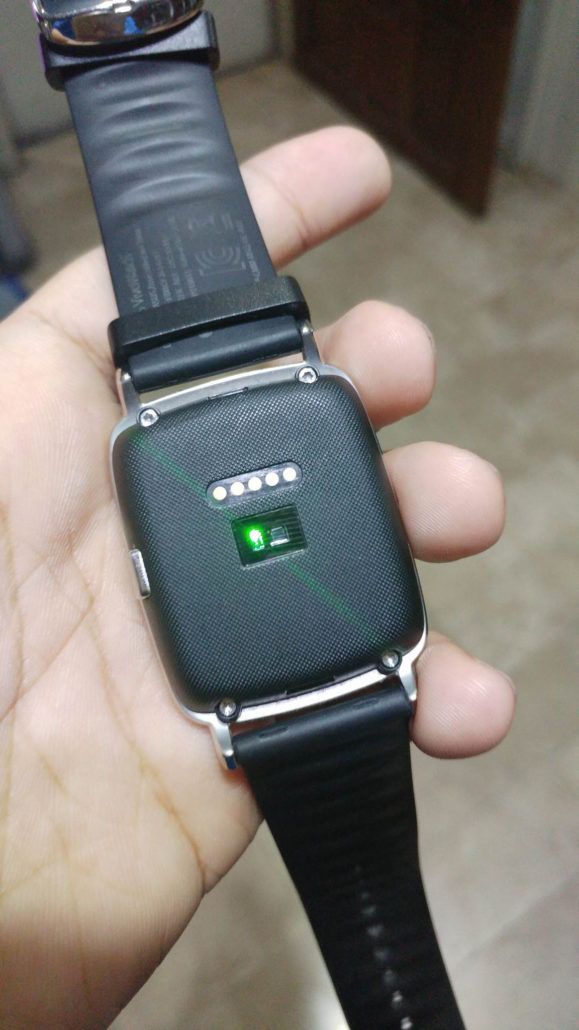
The Vivowatch monitors the heart rate from time to time, we estimate around every 5 minutes. Though you can request for your heart rate given the app status display, you have to wait around 5 seconds though before getting the results. We liked that the VivoWatch has an alert for reaching a certain heart rate, perfect when reaching your limit in an excercise.

We like the one in the Charge HR better as the heart rate monitor is really 24/7. At any given time, you can simply check the app status to check on your heart rate real time.
The Vivowatch uses the app “HiVivo” which has a very clean and graph based interface in reporting your progress. The App focuses on three zones which are Exercise (Calories and time duration of recorded exercises), HI (Steps, Calories, Happiness Index, Heart Rate) and Sleep (Sleep monitoring). The app is more of icon based for easy understanding, settings is flexible as well for customizing notifications, how vibrations will work, target calories and steps, change of watch face even set of warning heart rate if you are over working.
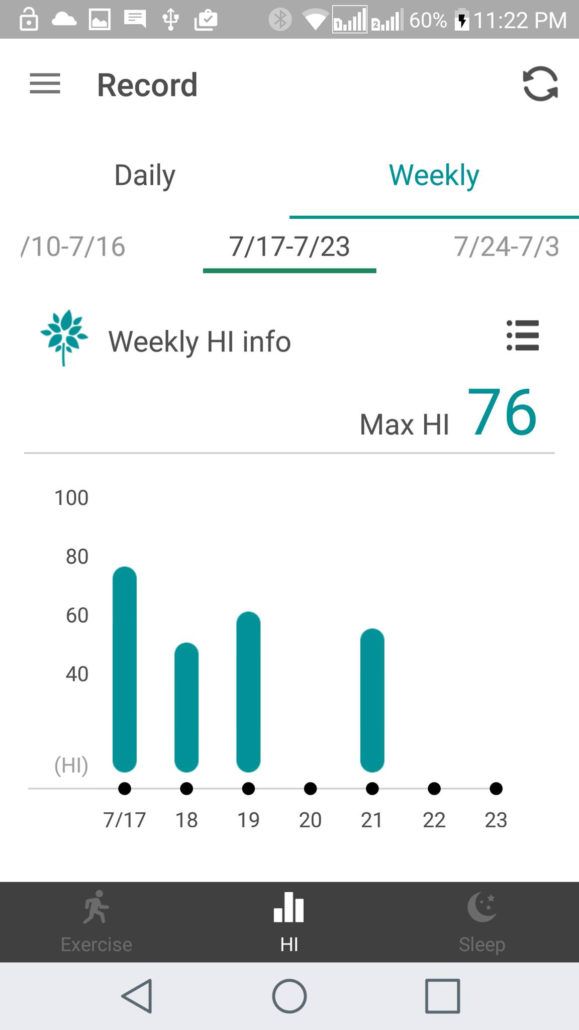
A disadvantage we see for the HiVivo is the lack of details when it comes to exercises recorded. Looking at the graph by weekly time frame lacks details such as calories burned as only time duration is shown. You have to navigate to the specific date in the daily tab before you can see your hour by hour progress. Unfortunately, you can’t simply press on one day and it will display the progress on that day.
Unfortunately event the sleep counter only display the time slept with the deep and light sleep separated on a line graph. No option unfortunately for a more specific detail or to zoom into a day to see the hour by hour progress. Specific details like start time of sleep, end time of sleep, and even wake up interruptions are not monitored for a more dynamic sleep monitoring. Though we appreciate the average turns (movement while sleeping), pulse (Heart rate) and comfort % (Good sleep quality) displayed on the week duration indicated to give you an idea of your sleep.
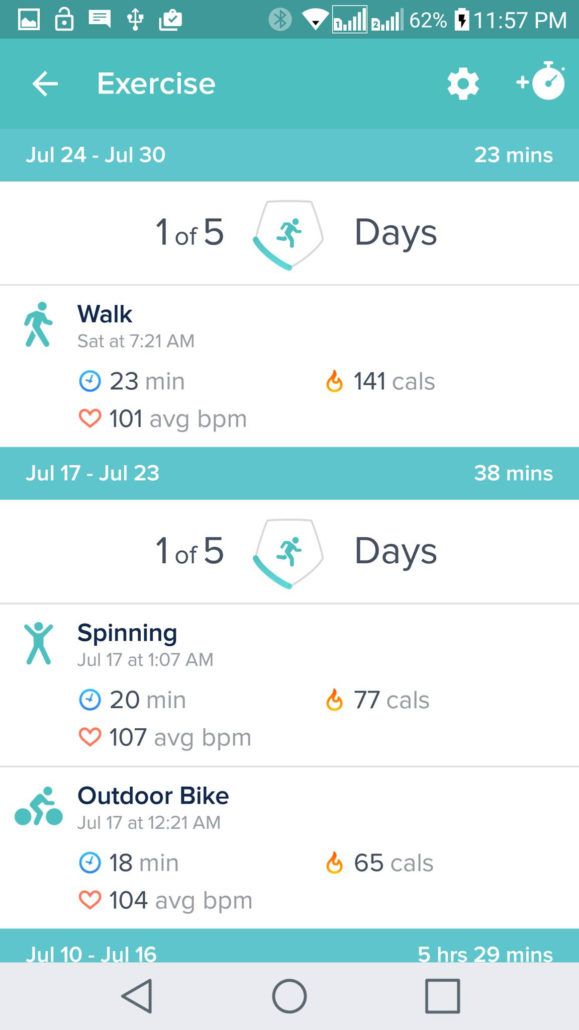
As for the Fitbit Charge HR, their wider experience in fitness trackers gives them the advantage in features that are more appreciated by fitness enthusiasts. Home screen of the Charge HR is a summary of everything from Steps walked, battery indicator, average heart rate, movement per hour, distance traveled, sleeps, food plan and even your weight goal (though you have to insert your weight manually).
Clicking on individual display stats brings you to a more detailed information. Such stats are calories, sleep, distance, floors, heart rate and more. But we are amazed in the level of detail in how the exercise tab is displayed. What’s good for every tracked exercise, you can edit the details such as what kind of specific exercise you did, down to the heart rate of steady, cardio and fat burning point of your exercise. You can even see the specific impact of the exercise you’ve done for the day.
For sleep, this is the forte of Fitbit similar to Jawbone. The sleep tracker is accurate with average sleep for the week and specific sleep hours per day. What is a delight is the goal for sleep can be seen with stars if achieved, making your tracking more motivational.
The main reason for these fitness trackers is to be more active, it’s good to know that both devices promote to be more active every hour. Notification of to be active vibrates the devices to notify you if you have a low steps counter for the hour or the day.
The Vivowatch has two special features worth mentioning, one is its Happiness Index which is ASUS’ special metric to measure your overall happiness for the day. The second one is the UV index which is the watch’s special sensor to get the UV exposure, it tells you if its normal, high or low to let you be more prepared to adjust to the environment.
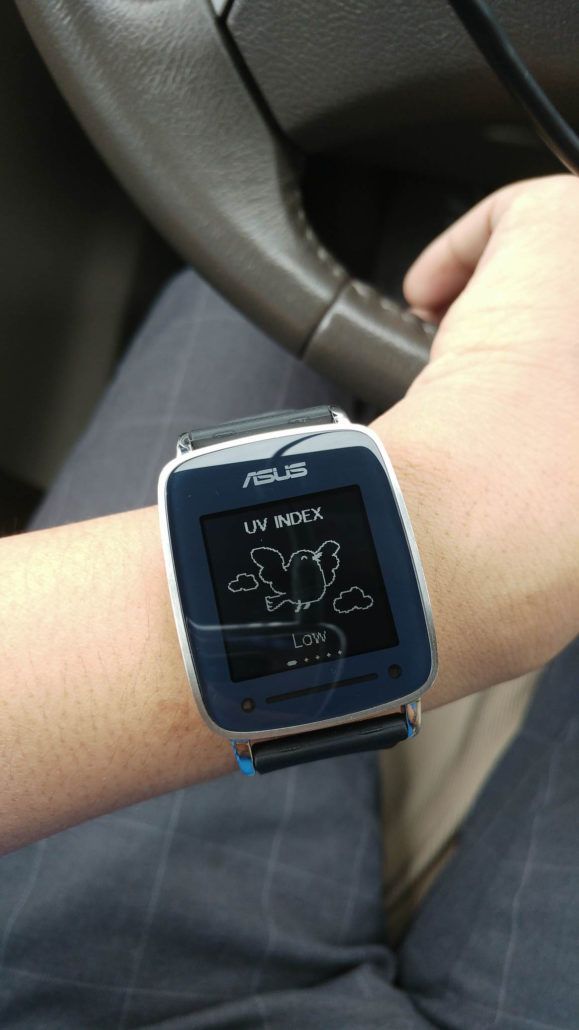
While both devices can set your daily goals for steps and calories, the Fitbit interface takes it a step further with challenges. Special goals and badges are rewarded to you when you are more active in exercises, floors climbed or even challenges with friends. Additionally having the friend system to keep up with other Fitbit users is one feature we really liked with the Fitbit eco-system.
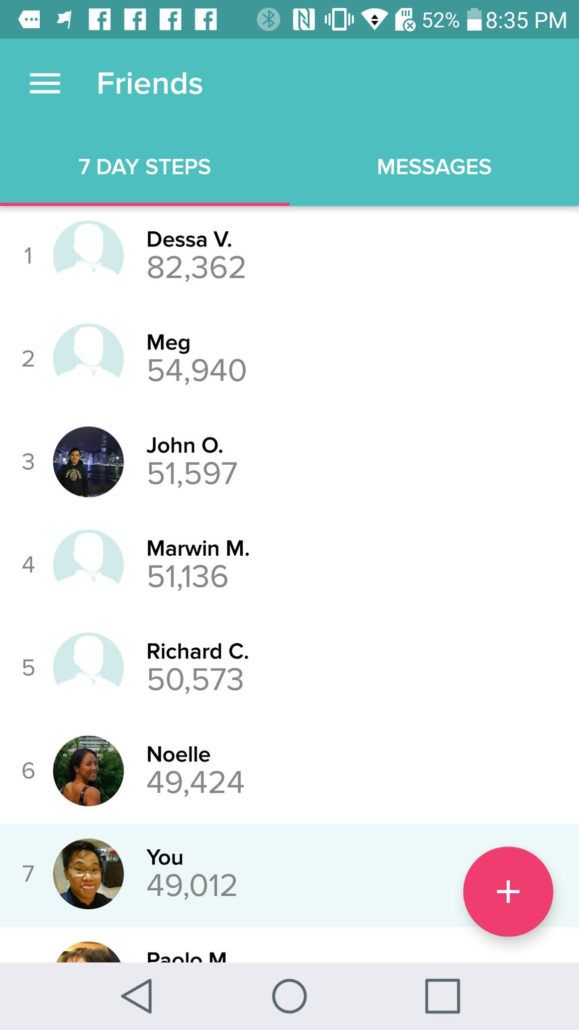

So far in our 3 weeks experience with the VivoWatch, we weren’t able to experience any special motivator notifications or the same eco-system of friends as Fitbit.
Both devices can last more than 5 days without charging, depending on how active you are then the vibration can definitely take a toll into your battery life.
Despite the notifications continously displaying for the VivoWatch, it still managed to outlast the FitBit in terms of battery life. We usually charge on the 6th day before getting a low battery indication.

Charing the Fitbit is direct through a dedicated cable while the VivoWatch is chargeable through a dock. Just don’t forget to misplace them and you will be fine.
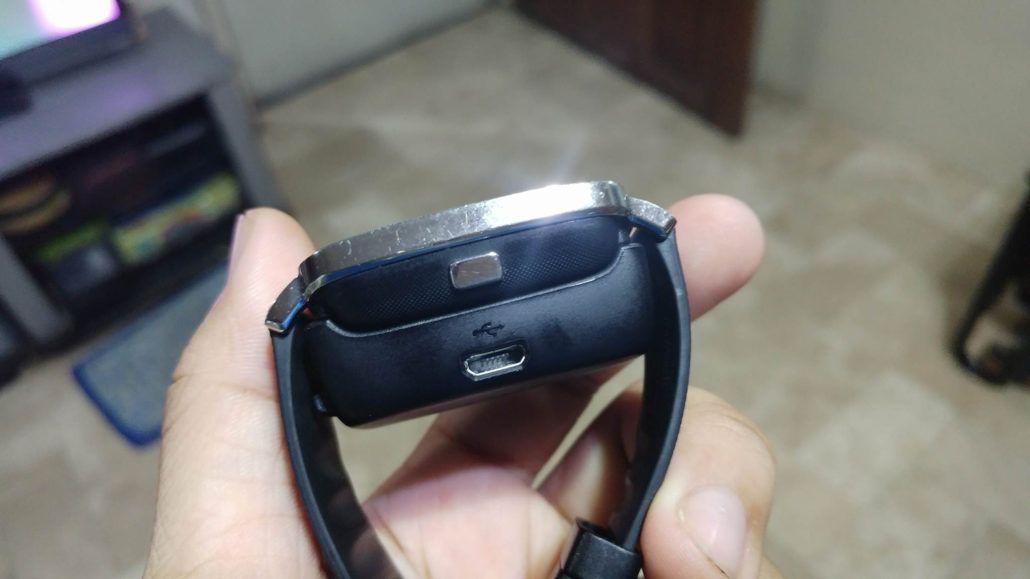
While both fitness trackers can deliver good fitness tracking and motivation, each device has their own pros and cons depending on the need of each customer.
VivoWatch
We recommend the Vivowatch for those who needs a smartwatch like function, the bigger screen and notification feed is definitely helpful or us. Though lacking in motivation and eco-system of friends, we still think the VivoWatch is still a good buy.
PROS
CONS
FitBit
We recommend the Charge HR for fitness junkies, especially if you are doing multiple sports as we loved that the Charge HR can track performance of different kinds of sports.
PROS
CONS
Both the Charge HR and VivoWatch has the SRP of Php6,990. The bottom line will only be what will be more in preference of your arm, a watch or wrist band? Only you can decide ultimately but we hope we have given you enough info to decide between the two.
